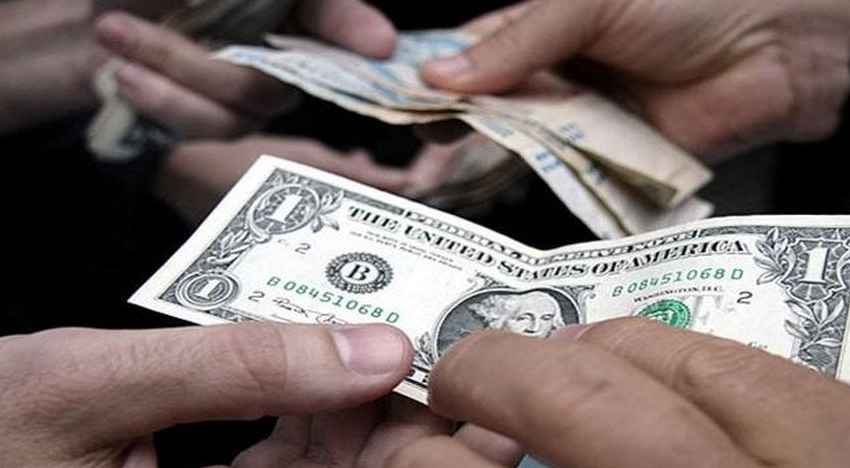
Inflation has been a long-term problem for Argentina with ups and downs, especially since the eighties. In 1989 a serious economic, political and social crisis began, with inflation reaching 3000% and street riots. To solve the situation, the country applied the Convertibility Policy, in which the value of the Argentine peso was brought into line with the US dollar. This provided a break for the economy and the argentines, but it ended with a new collapse of the economy at the beginning of the XXI’ century. This was due to the fact that the money Argentina borrowed abroad was backed by US dollars, but in 2001 the International Monetary Fund refused to lend more money which led to a major crisis. The corralito was imposed on bank deposits, the country was unable to pay back its external debt of millions, the peso-dollar conversion was halted and billions of US dollars were converted into Argentinian pesos that then devalued, there have been frequent presidents’ change and 2 out of 3 Argentineans were poor. The situation was so critical that in the midst of the social outburst there were dozens of deaths and injuries, as well as the return to inflation without a permanent solution (BBC, 2021).
In the following years, during the Kirchner couple’s terms in office, the situation was appeased -with some effects of the 2008 world economic crisis- until 2018, under the government of Mauricio Macri, when there was again a large increase in prices and financial instability which led the Argentine government to request financial assistance from the International Monetary Fund. The agreement reached is the largest in the organisation’s history and involves a financial support of $44,000 millions. The signed agreement is one of the most demanding and constraining, so for the first time the IMF included a clause allowing for increased spending on social protection. This loan must be repaid between 2021 and 2023, which strongly influences economic policies (Gimenez, 2022).
Current Situation
In 2021, the inflation was above 50%, with a soaring of the cost of living, that forced the president, Alberto Fernández, to freeze the price of more than 1400 basic products as electricity, gas or water to which it must be added the negotiation with the International Monetary Fund to establish the deadlines for the repayment of the debt incurred in 2018 by the previous president (Centenera, 2022). Although 2021 has been a year in which most countries have suffered high inflation figures, for Argentina this has not been the worst rise in recent years, and the only country in the region that exceeds it in inflation is Venezuela, which has been plunged into a serious crisis with figures that reached 700% (Sainz, 2022). For example, in 2019 Argentina’s inflation reached 53%, which indicates that the current figure is not a punctual consequence caused by Covid-19 pandemic but an endemic Argentinean disease that the Peronist government does not know how to put an end to either.
But why, being one of the main economies in the region and with a large amount of resources, does it still have a problem that other countries have overcome?
Experts agree that the main reason for Argentina’s long history of inflation is that it spends more than it earns, resulting in a fiscal deficit. In the last sixty years, in 54 of them there has been a fiscal deficit. Argentina spends the money to finance the health system, subsidies, state aids and pensions, so they resort to external debt. However, it is difficult for Argentina to obtain this funding due to the high number of times it has used this method, so the country resorts to increasing the amount of available money that enters into the economy. This causes the national currency to lose value and increases the cost of goods. On the other hand, the existence of monopolies in production and distribution of products set prices to their convenience, contributing to the inflationary pressure, and most of Argentines, trying to protect their savings, they convert them into US dollars. As the country does not have enough US dollars, the government controls the amount that is sold, limiting it, and people resort to the parallel market, where the exchange rate is much more expensive, which is reflected in the price of the products (Rivas, 2022; Sainz, 2022).
The solution to the Argentina’s inflation problem is divided along two lines. The first supports the International Monetary Fund’s recommendations to cut public spending. And the second, supported by the actual government, wants the State to be the one to correct the situation. Although everyone agrees on the need to tackle inflation in some way, Argentina’s recent history is not very optimistic in this respect, as it seems to be an endemic evil that will be sustained over time and with no prospect of improvement in the short term as its economy will be tied to IMF’s debt restructuring -the government shall take the proposed measures to postpone the payment- and early price increases by companies to maintain profits. The situation only puts more pressure on the population, especially the most vulnerable, who have seen the poverty rates increase to 42% of the population.
References
BBC (19/11/2021) “¿Por qué Argentina no supera su problema de inflación?. Available at: https://www.bbc.com/mundo/noticias-america-latina-59353395#:~:text=Es%20un%20problema%20de%20larga,despu%C3%A9s%20del%20correspondiente%20a%20Venezuela.
Centenera, M. (13/01/2022) “Argentina registró una inflación de 50,9% en 2021”. El País. Available at: https://elpais.com/economia/2022-01-13/argentina-registro-una-inflacion-de-509-en-2021.html
Gimenez, J. (05/01/2022) “Deuda con el FMI: 4 gráficos para entender el acuerdo que la Argentina busca renegociar” Available at: https://chequeado.com/el-explicador/deuda-con-el-fmi-4-graficos-para-entender-el-acuerdo-que-la-argentina-busca-renegociar/
Rivas, F. (09/01/2022) “Argentina se enreda en la negociación con el FMI a dos meses de un pago que no puede afrontar”. El País, Available at: https://elpais.com/economia/2022-01-09/argentina-se-enreda-en-la-negociacion-con-el-fmi-a-dos-meses-de-un-pago-crucial.html
Sainz, A. (13/01/2022) “Inflación regional: la Argentina puede disputer el primer lugar a Venezuela”. La Nación. Available at: https://www.lanacion.com.ar/economia/negocios/inflacion-regional-venezuela-encontro-un-rival-de-peso-nid13012022/
By The European Institute for International Law and International Relations.















